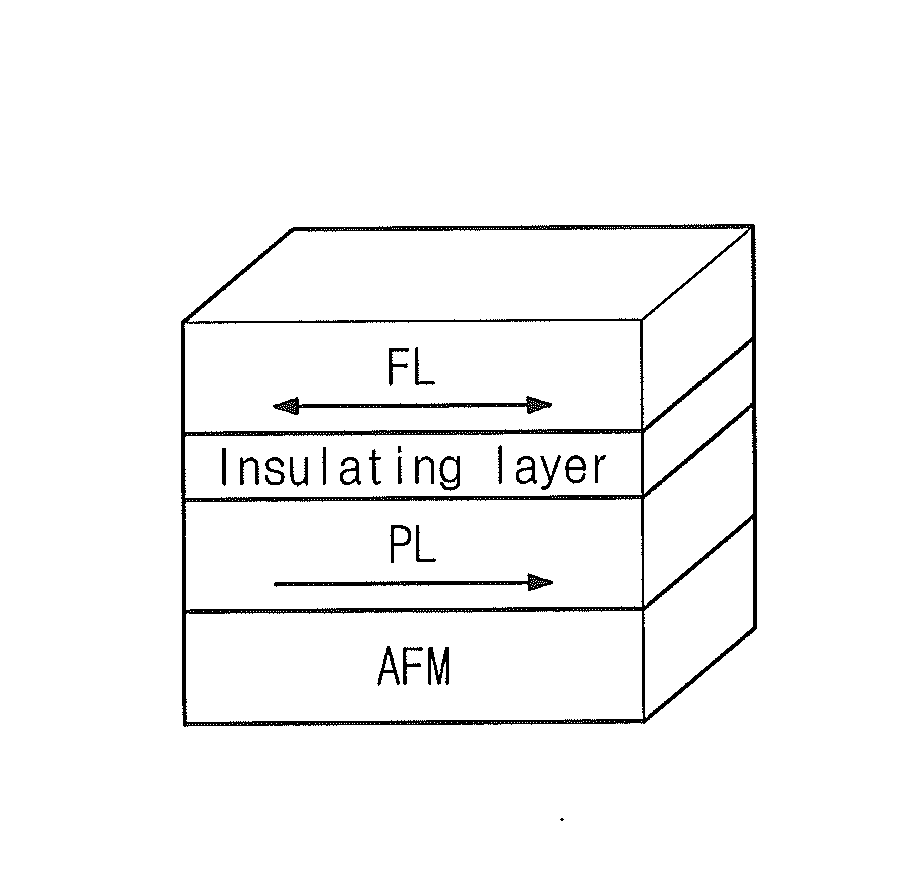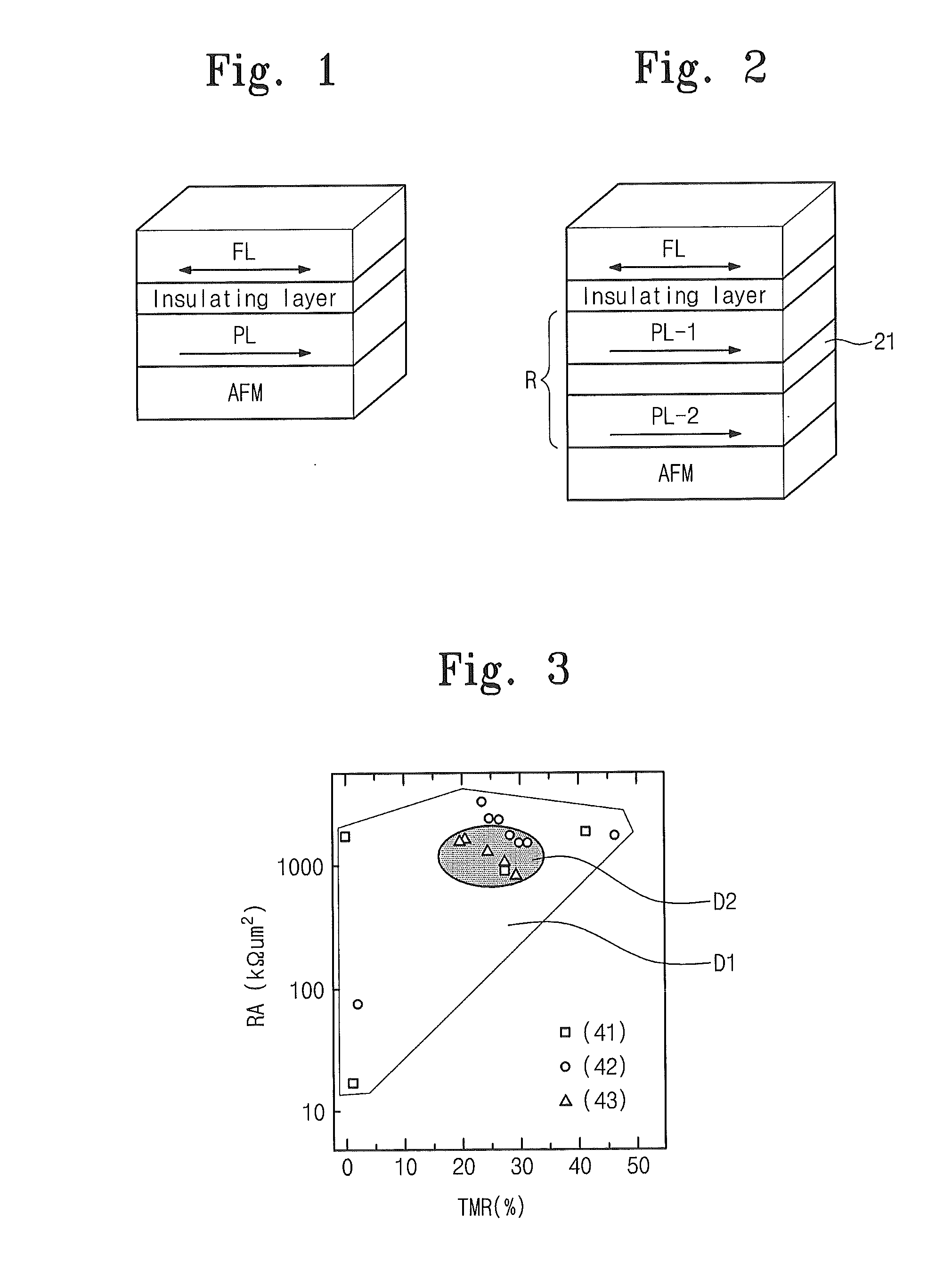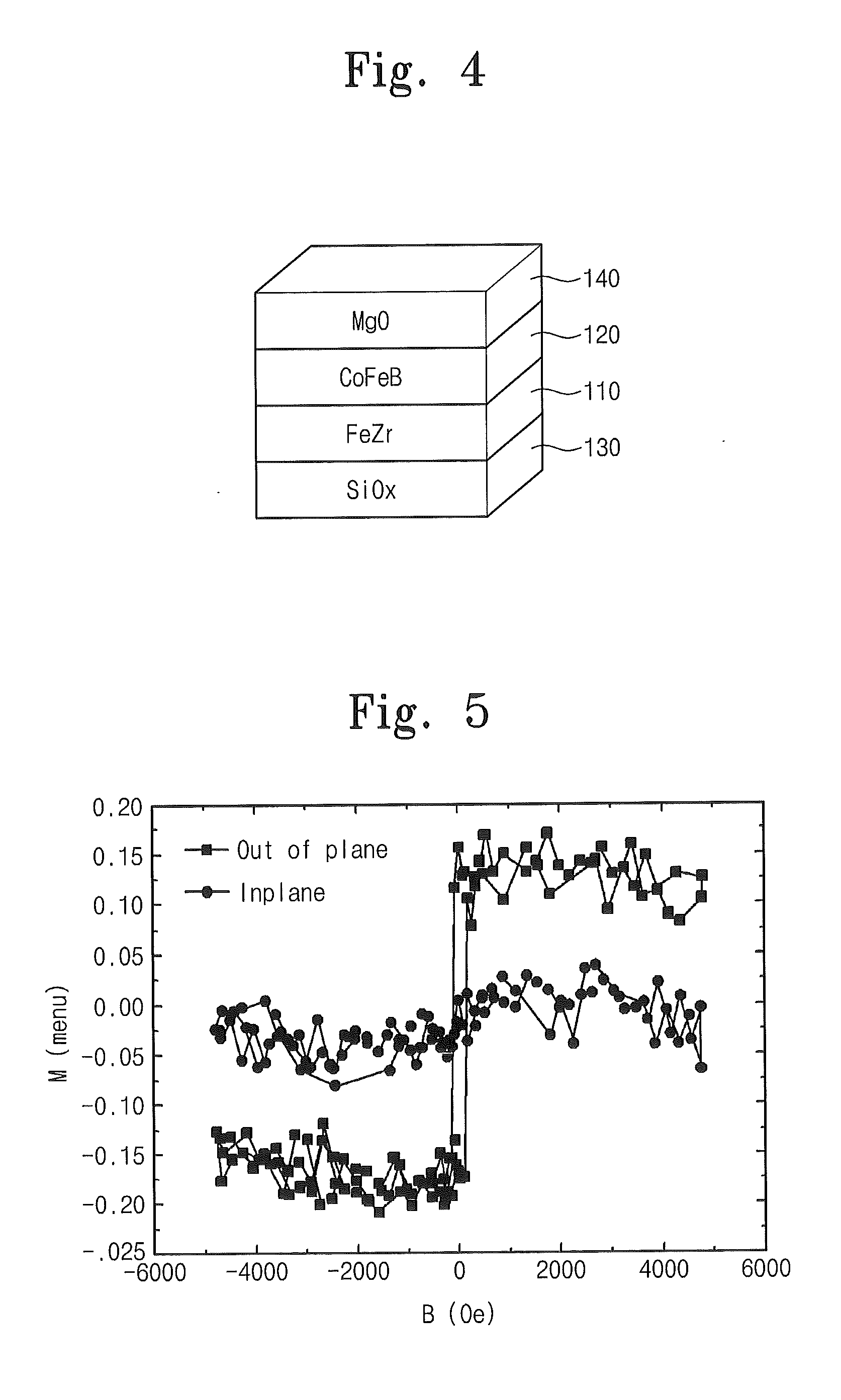Magnetic Tunnel Junction Device Having Amorphous Buffer Layers That Are Magnetically Connected Together And That Have Perpendicular Magnetic Anisotropy
a tunnel junction and buffer layer technology, applied in the field of magnetic tunnel junction devices, can solve the problems of deterioration of tunnel insulating layer, and many limitations in the uniformity of magnetoresistance, so as to achieve significant improvement of magnetic tunnel junction device characteristics and uniformity of magnetoresistance.
- Summary
- Abstract
- Description
- Claims
- Application Information
AI Technical Summary
Benefits of technology
Problems solved by technology
Method used
Image
Examples
first embodiment
[0048]FIG. 2 is a schematic view illustrating a structure of a magnetic tunnel junction device proposed according to the present invention. For convenience in description, FIG. 2 is illustrated by focusing on a ferromagnetic layer and an AFM layer.
[0049]As described above, the magnetic tunnel junction device basically has a structure of “ferromagnetic material-insulating layer-ferromagnetic material”, and is formed in such a manner that, for convenience in operation, magnetization of one of two ferromagnetic materials is pinned and the magnetization of the other material may be varied. For convenience, the former is denoted as a pinned layer and the latter is denoted as a free layer. Since a tunneling current may vary according to whether magnetization directions of the two ferromagnetic materials are parallel or antiparallel, the magnetic tunnel junction device may function as a memory device by sensing the tunnel current.
[0050]Herein, a material that may secure a high magnetoresis...
second embodiment
[0073]FIG. 4 is a schematic cross-sectional view illustrating an example of a magnetic device according to the present invention. In FIG. 4, in order for a CoFeB magnetic material generally having horizontal magnetic anisotropy to have perpendicular magnetic anisotropy, a stack structure of a sample is illustrated, in which perpendicular magnetic anisotropy is obtained by using a FeZr amorphous morphology buffer layer.
[0074]Herein, the expression “morphology buffer layer” denotes a layer preventing the occurrence of texture collision due to the propagation of texture into above and below adjacent thin film layers or a layer blocking the unwanted propagation of texture.
[0075]In FIG. 4, the magnetic device includes an amorphous material layer 110 and a perpendicular magnetic anisotropy material layer 120 formed on the amorphous material layer 110. The amorphous material layer 110, as a layer of a predetermined amorphous material, is formed on a bottom layer 130, and the perpendicular ...
PUM
 Login to View More
Login to View More Abstract
Description
Claims
Application Information
 Login to View More
Login to View More - R&D
- Intellectual Property
- Life Sciences
- Materials
- Tech Scout
- Unparalleled Data Quality
- Higher Quality Content
- 60% Fewer Hallucinations
Browse by: Latest US Patents, China's latest patents, Technical Efficacy Thesaurus, Application Domain, Technology Topic, Popular Technical Reports.
© 2025 PatSnap. All rights reserved.Legal|Privacy policy|Modern Slavery Act Transparency Statement|Sitemap|About US| Contact US: help@patsnap.com



